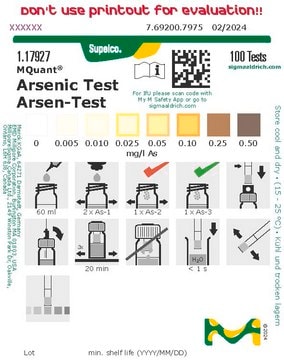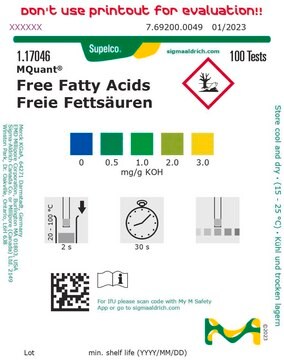106-05N
Human Dermal Fibroblasts: HDF, neonatal
Synonyme(s) :
HDF cells
About This Item
Produits recommandés
Source biologique
human neonatal foreskin or adult skin (normal)
Niveau de qualité
Conditionnement
pkg of 500,000 cells
Fabricant/nom de marque
Cell Applications, Inc
Mode de croissance
Adherent
Caryotype
2n = 46
Morphologie
Fibroblast
Technique(s)
cell culture | mammalian: suitable
Conditions d'expédition
dry ice
Température de stockage
−196°C
Description générale
Dermal Fibroblasts are responsible for producing the extracellular matrix forming the connective tissue of the skin, and play a crucial role during wound healing. HDF provide an excellent model system to study many aspects of cell physiology, and have been utilized in dozens of research publications, particularly those related to skin biology and reprogramming/induced pluripotency studies. HDF were used to create, along with human synovyocytes, induced pluripotent stem cells (iPSC) by using the now classic “Yamanaka cocktail” of Oct3/4, Sox2, Klf4, and c-Myc, the discovery for which Dr. Shinya Yamanaka was awarded the Nobel Prize in 2012 (Takanashi, 2007; 2009), and to characterize iPSC general properties, miRNA expression profiles and differentiation potential (Hayashi, 2010; Ohta, 2011; Koyanagi-Aoi, 2013; Noguchi, 20130; Razak, 2013; Sakurai, 2013; Tanaka, 2013; Yanagida, 2013)
Origine de la lignée cellulaire
Application
Composants
Notes préparatoires
- Primary culture, >500,000 cells in Fibroblast Basal Medium containing 10% FBS & 10% DMSO
- Can be cultured at least 16 doublings
Procédure de repiquage
Clause de non-responsabilité
Code de la classe de stockage
11 - Combustible Solids
Classe de danger pour l'eau (WGK)
WGK 3
Point d'éclair (°F)
Not applicable
Point d'éclair (°C)
Not applicable
Certificats d'analyse (COA)
Recherchez un Certificats d'analyse (COA) en saisissant le numéro de lot du produit. Les numéros de lot figurent sur l'étiquette du produit après les mots "Lot" ou "Batch".
Déjà en possession de ce produit ?
Retrouvez la documentation relative aux produits que vous avez récemment achetés dans la Bibliothèque de documents.
Protocoles
This protocol contains: Storage - Preparation for Culturing - Culturing HDF - Subculturing HDF
3D cell culture protocol for generating epidermal human skin tissue using primary human keratinocytes, dermal fibroblasts, and collagen-coated transwell inserts.
Notre équipe de scientifiques dispose d'une expérience dans tous les secteurs de la recherche, notamment en sciences de la vie, science des matériaux, synthèse chimique, chromatographie, analyse et dans de nombreux autres domaines..
Contacter notre Service technique





